Note: This is a guest blog post by Adam Enfroy (and excellent one, we must admit). The views and opinions expressed herein are those of the author.
The ecommerce industry is growing rapidly at a rate of 23% year-over-year. Yet, many ecommerce stores still lack the proper marketing strategy to build awareness and drive visitors to purchase.
 It’s exciting to launch an ecommerce store, and if brands can start out of the gate with the proper digital marketing tactics at a solid baseline, they’ll make money online faster.
It’s exciting to launch an ecommerce store, and if brands can start out of the gate with the proper digital marketing tactics at a solid baseline, they’ll make money online faster.
The key is to understand buyer personas, marketing funnels, and all stages of the buyer’s journey to maximize impact. This includes aligning all marketing tactics so that they carry the brand’s voice, hit return on ad spend (ROAS) goals, and guide users down the funnel.
Before officially launching your ecommerce store, it’s imperative to design and orchestrate a cohesive marketing plan leveraging:
- Social Media Marketing
- Search Engine Optimization (SEO)
- Pay Per Click Advertising (PPC)
- Affiliate Marketing
This article will outline a few of the top ways ecommerce merchants can generate traffic and sales for their new online store with an effective ecommerce marketing strategy.
A Unified Approach to Ecommerce Marketing
Ideally, each aspect of your ecommerce marketing strategy must work together in unison to accomplish the same goal: guiding customers through the marketing funnel.
When you work on one component of your plan, you should always consider how it may impact another. For instance, if you launch social media ads with the goal of generating awareness of your ecommerce store, think about how this will be represented on your product pages, affiliate banners, and future retargeting ads.
Throughout this process, your ecommerce brand’s messaging, logos, and design must also be evident and consistent. This will ensure potential customers will recognize and recall your brand at any point during the purchasing cycle.
Optimize the Ecommerce Funnel
The marketing funnel has three distinct sections: the top, middle, and bottom. Each tactic in your ecommerce promotional plan falls into a specific area of the funnel.
It’s simple — buyers fall into distinct stages based on how ready they are to purchase from you.
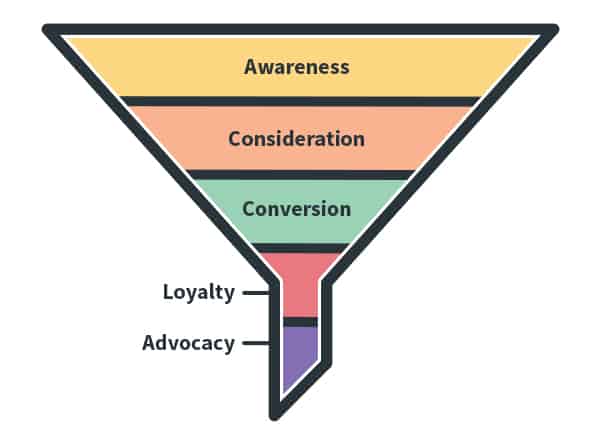
Source: adamenfroy.com
With a marketing funnel, you need to understand your ROAS targets. Top of funnel tactics won’t generate the same return on investment and scalability as your bottom of the funnel campaigns. For example, your awareness-driving Facebook ads won’t be as profitable as your cart abandonment retargeting banners.
While each tactic will have a different return on ad spend, it’s important that all combined paid tactics have a ROAS of 3:1.
1. Top of the Funnel Marketing Tactics
Top of the funnel (TOF) marketing tactics are used with the intent of introducing your brand to new audiences. The goal is to make a fantastic first impression and leave potential customers wanting to learn more.
Top of the funnel ROAS targets:
- Facebook prospecting ads: 2.5:1
- Google Display Network ads: 2:1
An example of TOF tactics are Facebook prospecting ads. These targeted social media ads generate awareness of your brand and products to segmented audiences on the platform.
Although Facebook awareness ads generally have a lower return on investment, they are imperative for introducing your ecommerce store to new customers and let them enter the funnel.
2. Middle of the Funnel Marketing Tactics
After an audience is familiar with your brand, they are getting groomed to become paying customers.
Middle of the funnel marketing tactics include PPC, email marketing, SEO, and affiliate marketing. All of these strategies move customers closer to making the final purchase decision. These strategy engage with people who already know you, and delight them with engaging content, email promotions, and downloads so that they know, like and trust you.
Middle of the funnel ROAS targets:
- Non-brand search: 3:1
- Affiliate marketing: 9:1
- Organic search: free, but takes time commitment
- Email marketing: 37:1
3. Bottom of the Funnel Marketing Tactics
Finally, bottom of the funnel tactics focus on converting your fans into customers. Common strategies include Google retargeting ads, cart abandonment emails, and Facebook Dynamic Product Ads (DPAs).
Bottom of the funnel ROAS targets:
- Google retargeting ads: 5:1
- Facebook DPAs: 7-20:1
- Cart abandonment emails: 37:1
As a result of their personalized nature, bottom of the funnel tactics have a much higher return on investment than top and middle of the funnel techniques. However, customers can’t make it to the end of the buying cycle if top and mid-funnel tactics aren’t effectively in place.
Ecommerce Marketing Promotions
To maximize your yearly revenue, try having a promotion at least one week per month. These promotions should be scheduled well in advance (think yearly promo calendar) so you know how to update your website and marketing channels. On your website itself, highlight the details of your promotion on your top banner and slider images.
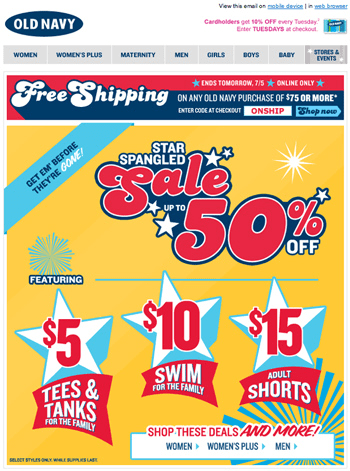
In addition, your promos should be planned and scheduled so that you can prep your content and assets. You’ll need a lot of content — slider images, email copy and imagery, affiliate banners, Facebook images, and Google Shopping promos — not to mention discount codes scheduled inside of your ecommerce platforms.
Have one designer create a cohesive feel across every asset. For example, a Facebook ad with Arial font and red colors won’t match a blue slider with Open Sans.
Typical ecommerce promo calendars have an omnichannel marketing strategy and reflect retail holidays such as Valentine’s Day, Labor Day, and Black Friday, along with a strong holiday push in December before your shipping cutoff date.
Here are some promotion ideas and discounts that can be used for your online store:
- 20% off orders over $50
- 30% off orders over $100
- Combine the two above into one “Buy More, Save More” promotion
- Black Friday: 30% off all orders (average discounts on Black Friday are 37%)
- Cyber Monday: 40% off all orders
Now that you understand how the marketing funnel benefits your ecommerce launch and have your promo calendar in order, let’s look at how social media, SEO, PPC, and affiliate marketing help maximize revenue.
Social Media Ecommerce Marketing Strategies
With 84% of online shoppers in the US reviewing at least one social media site before making a purchase, having a social media presence for your online store is vital. In addition to organic social media posts, there are opportunities for paid social marketing at every stage of the funnel.
Before you get started, set up your Facebook Business Manager, Facebook Pixel, conversion events, and sync your Instagram to your Facebook page so that your ads show up across both platforms.
1. Facebook Prospecting Ads
Did you know that over 30% of your Facebook fans won’t see your company’s organic posts? Enter paid social media marketing.
At the top of the funnel, Facebook prospecting campaigns introduce your ecommerce store to a new audience. To find new, converting audience segments, experiment with targeting different age groups, locations, interests, and other demographic information when orchestrating this part of your marketing campaign.
You can also use your Facebook pixel to create lookalike audiences based on user behavior. Facebook users who are similar to those who purchased high AOV products on your site make a good prospecting audience. Experiment with 2, 5, and 10% lookalikes to see which one works for you.
Considering the average Facebook user clicks on approximately 8 ads per month, it is also in your best interest to make your social media scheduling tools make ads attractive and enticing. The goal is to make a lasting first impression that will leave the audience wanting to learn more about your products. Video and image ads in the Facebook news feed convert best. Quality ads drive up customer engagement and click-through-rates, increasing your relevancy score, and lowering your average cost-per-click.
Create separate ad campaigns inside of Facebook’s Ad Editor. Once your main campaigns are structured, use the Power Editor to A/B test gender, age, and messaging to increase your ROAS.
Finally, test different bidding strategies and goals like CPM, CPC, lowest cost, target cost, and optimized for conversion. I recommend focusing on conversions and using a manual strategy so that you have the most control.
2. Facebook Retargeting Ads
Chances are, potential customers will not make a purchase after their first visit to your website. After all, in Q2 of 2018, only 2.86% of ecommerce website visits converted into purchases. With this in mind, social media retargeting ads can recapture a user’s interest.
Retargeting ads are only shown to users who have visited your website within a designated time frame. Some ways you can segment these audiences by time is from 3, 7, 15, 30, 90, or 180 days. This enables you to test various campaign types, messaging, and bidding strategies to target users most effectively.
These A/B testing tactics also allow you to test various discounts and promotions for audiences who have already interacted with your brand. For example, in one retargeting ad group, you can test promo vs. non-promo messaging or include different images, text, and emojis to see which convert best.
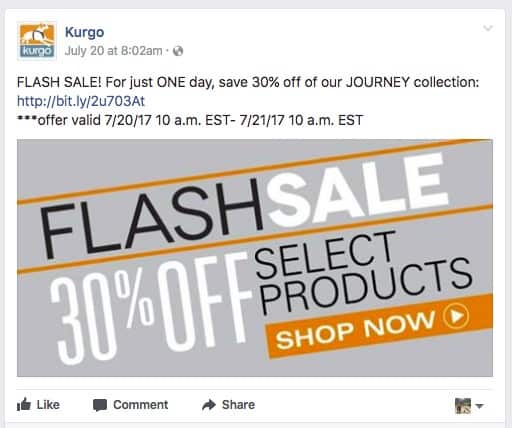
3. Facebook Dynamic Product Ads
When a customer is on the verge of a purchase decision, sometimes they need that extra targeted push. This is where Facebook Dynamic Product Ads (DPAs) come in handy.
These personalized ads display a carousel of products to a user that visited individual product pages. If a user only visited one product page, Facebook will take the product catalog that you uploaded and show other related products.
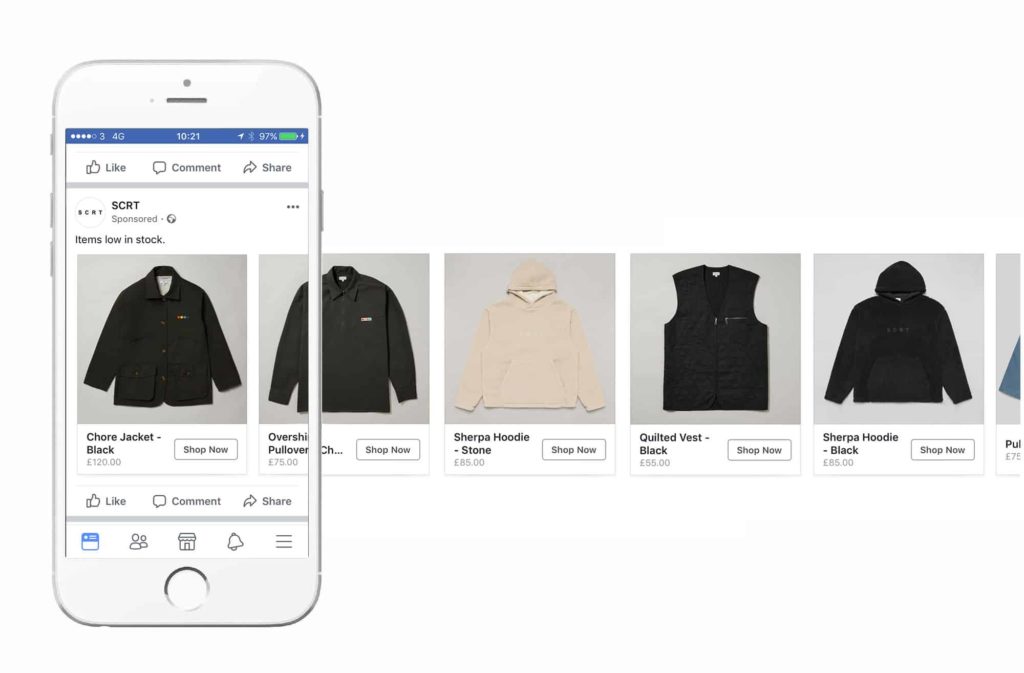
Often, a gentle reminder via a Facebook DPA is all the customer needs to finally make that purchase. Considering 86% of consumers are “blind to banners,” these personalized ads take a targeted and logical approach to reaching potential customers.
Dynamic Product Ads have some of the highest return on investment numbers of any paid social tactic.
Online stores with a social presence have 32% more sales on average than stores that don’t. Leverage social media ads at all stages of the marketing funnel for a successful ecommerce store launch.
Search Engine Optimization for Ecommerce Store Launches
When you’re interested in purchasing a product, what’s the first thing you do? You search for it online.
A search engine optimization (SEO) strategy consists of several tactics working in tandem to rank your products and content for relevant keywords searched by interested customers. As a result, you can use these optimization techniques to rank your category pages, blog posts, and ecommerce product pages for relevant search queries.
All SEO strategies begin with keyword research. Find long tail keywords that match your products, have high search volume, and low competition. Ecommerce sites can often be light on content. This can be improved with ecommerce blogs, optimized category page text, and well-written product descriptions.
Oftentimes, ecommerce category pages only have a page title with products underneath. That doesn’t help search engines. A well-planned, SEO-optimized content block on these pages can boost rankings quickly. If you don’t want any content above-the-fold blocking quick access to your product layout, add the content block to the bottom of the page. Once your category page content is added, use Google Search Console to have Google fetch your new page.
The next step for effective ecommerce SEO is optimizing your product pages. According to Shane Barker (who actually wrote for this blog as well), the best ways to optimize an ecommerce product page include:
- Rich product descriptions with keywords and phrases naturally included in the copy
- Image alt tags
- Title tags and headers
- Internal links to related products or content
- Meta descriptions optimized for click-through-rates
- Proper URL structure
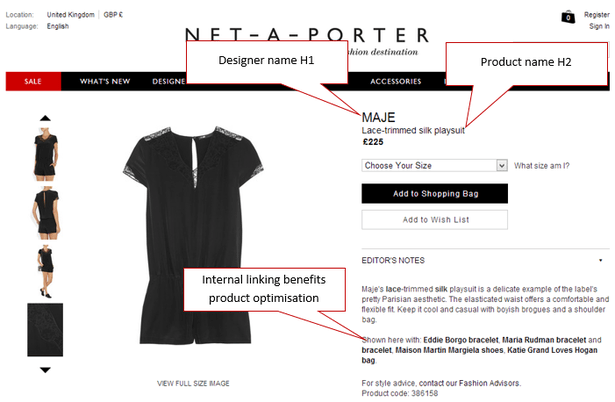
Finally, your ecommerce blog will build awareness around your brand, showcase your thought leadership, target new keywords in your niche, and lead to engagement like content downloads, email sign-ups, and helpful feedback from on-page surveys. Ecommerce blog posts should be 1,500+ words, feature images, and include the keyphrase in the topic title, URL and throughout the body copy.
There are so many more SEO tactics to cover, but by optimizing your category pages, product pages, and blog posts is a great start.
SEO Tactics for Ecommerce Blogs
According to Ryan Robinson from ryrob.com, you need to carefully choose your blog’s content management system (CMS) as 60% of all blogs are on WordPress.
One way to leverage WordPress for your ecommerce blog is by using a WordPress ecommerce plugin. According to BigCommerce, you can use an API to connect WordPress to your ecommerce platform to combine the best elements of content and commerce. If you’re going to launch your site on WordPress, use a tool like HRANK to compare the best web hosting options.
Once you’re up and blogging, you need to up your game in 2019. Google is getting smarter. With RankBrain better understanding user intent, your blog posts need to be as engaging as possible so readers don’t bounce.
Second, use a tool like Ahrefs to discover your target keywords and secondary keywords. Just because you have one target keyword doesn’t mean you can’t rank highly on Google for close variations. As an example, if your ecommerce store sells camping supplies, your article titled The 15 Best Sleeping Bags of 2019 would feature the following elements:
- URL structure: /blog/best-sleeping-bags
- Target keyword: best sleeping bags
- Secondary keywords: winter sleeping bags, cold weather sleeping bags, comfortable sleeping bags, sleeping bags for camping, summer sleeping bags, etc.
Besides on-page SEO and creating quality content, the quickest way to build Domain Authority (DA) is by obtaining backlinks. First, look for opportunities to guest post on authoritative websites in your niche. In these posts, link back to your blog posts, product pages, and main URL if you can.
To work with other sites on guest posts, engage with them first and provide value – share their posts, comment on their blogs, and connect with them on LinkedIn, Twitter, and Facebook. Once they have some understanding of who you are, create a cold email template and reach out to them. Your email should be concise, ask about guest blogging opportunities, and provide samples of your previous work.
By leveraging strong on-page ecommerce SEO strategies in tandem with a link building and outreach program, you’ll start building Domain Authority and increasing your search rankings.
Ecommerce Pay Per Click Advertising Strategies
Did you know PPC visitors are 50% more likely to purchase something than organic visitors?
PPC ads target users based on their search query. An ecommerce brand can bid on specific keywords and phrases in their niche and bid enough to outrank their competition. There are two main types of PPC for ecommerce companies – brand and non-brand search.
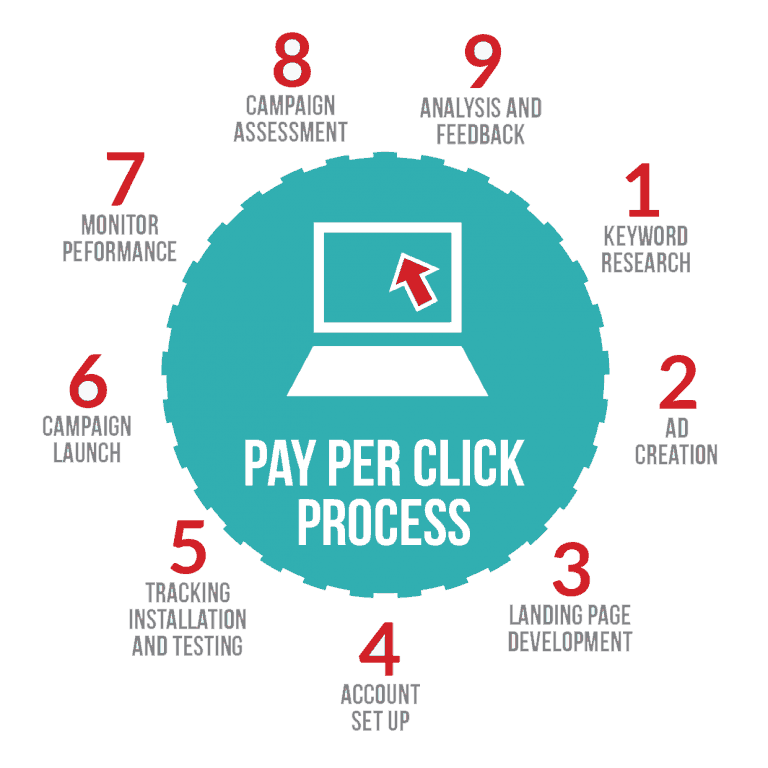
Brand search – or brand bidding – is related to your company name and shows ads for users searching for your brand by name. These ads have the highest conversion rates in search because users are already aware of your brand and products.
With ecommerce PPC, you want to control your presence on Google, so aim for an average position of 1.0 – 1.2 to ensure you have the highest brand impression share compared to your competition.
Second, non-brand search campaigns target keywords in your niche that don’t include your head terms. For example, if you’re selling camping gear, some non-brand keywords include hiking poles, camping supplies, best sleeping bags, two person tent, etc. Non-brand keywords are more competitive and have lower conversion rates because they have higher CPCs and visitors may not yet be aware of your brand.
Of course, bidding for non-branded keywords will also establish an introduction with those at the top and middle of the funnel. This builds your audience lists and opens the door for retargeting.
1. Sync Up with Google Shopping Ads
Another PPC opportunity for ecommerce brands is Google Shopping Ads. Instead of presenting potential customers with a PPC text ad, Google Shopping is a way to sync your website’s product catalog with Google to update your product data regularly on Google and show results in their shopping platform.
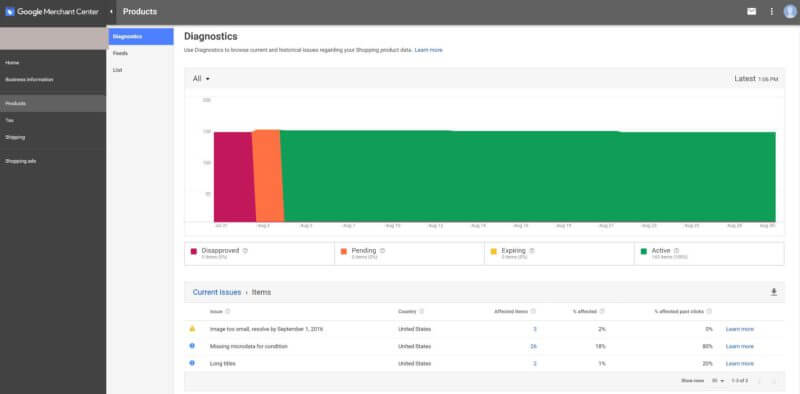
Once your product catalog is synced with Google Merchant Center, you have to double check your settings. First, make sure your prices are all displaying properly on Google Shopping and your images look correct – sometimes there are syncing issues that impact how your products are displayed.
Next, check your destination URLs to ensure none are going to dead/404 pages. Once everything looks good in your CSV file and product catalog, you can start optimizing your campaigns.
Organize your product groups so that you can properly set higher bids on higher AOV items. Add in negative keywords to eliminate irrelevant traffic. Next, start with mobile ads active, but keep a watchful eye on this – oftentimes conversion rates are low. Use geographic bid modifiers to improve conversion in high performing areas. And finally, if some of your products don’t fit into a product group, they will go into an “Everything Else” group where you can adjust the bids down.
2. Retarget Past Website Visitors
Sometimes, customers are not ready to make a purchase online. In fact, in can take 7-13 touches to generate a sales lead.
Retargeting ads can convince customers to return to your website and make a purchase. In fact, website visitors who are retargeted with display ads are 70% more likely to convert.
One way to target these past customers is through remarketing lists for search ads (RLSA). While other forms of retargeting ads display image ads like banners and animated gifs, RLSAs target users on the search network.
Similar to PPC ads, you’ll need to bid on specific keywords if using RLSA ads. You can slightly mix up your messaging because you know the searcher is aware of your brand.
Another tactic is using remarketing banner ads on the Google Display Network (GDN). The Google Display Network is a network of over 2 million websites where you can deploy your banner ads.
You can segment users and target them by landing page visit, cart abandonment, recency and more. Make sure to target users who visited your home page, category pages, individual product pages, and cart abandoners separately. That way you can bid higher on your more value audience. For example, someone who added a product to their cart but didn’t checkout 3 days ago is more valuable than someone who simply visited your home page 30 days ago – so bid accordingly.
Make sure to A/B test different versions of your imagery to maximize conversions. And test adding discounts to bottom of the funnel display ads targeting your most valuable audience segments. You should optimize your website for conversions with strong calls-to-action and accessible shipping information, as well as more advanced tactics to close deals like electronic signature software and live chat tools.
When you’re getting ready to launch your ecommerce store, have your PPC ads ready to roll so you can start targeting new audiences right from the start.
Drive New Customers with Affiliate Marketing
Another way to drive sales to your newly launched ecommerce store is with affiliate marketing. These programs allow influencers, bloggers, and other publishers to develop content which links to your products in exchange for a commission of the sales.
Hosting Tribunal recently reported that 81% of brands rely on affiliate programs for driving sales and achieving their marketing goals.
Affiliates can embed affiliate links to your products in all types of content — review articles, video descriptions, emails, and even right on Pinterest. It’s in the affiliate’s best interest to develop content which drives sales to your store, so the more links, the more potential affiliate commissions.
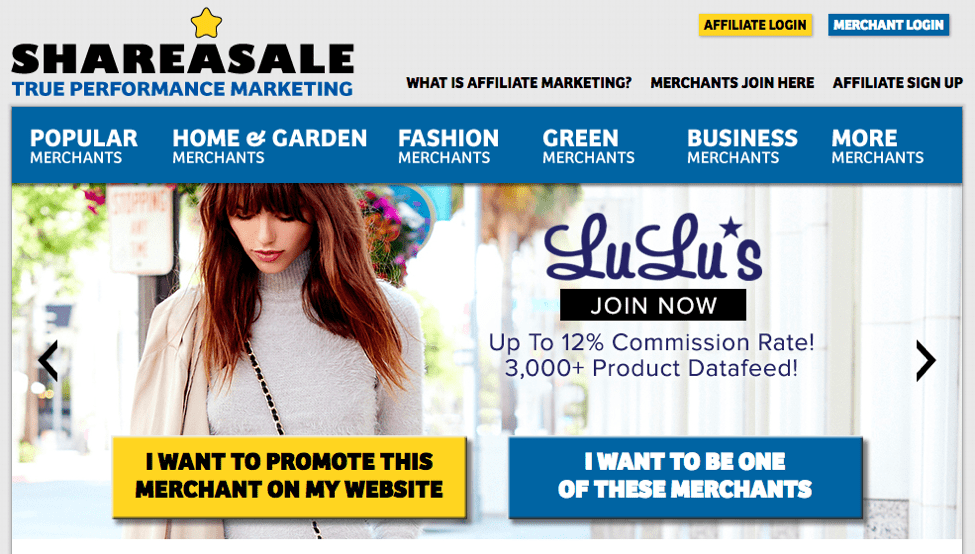
The first step to taking advantage of this marketing opportunity is to join an affiliate network. A few of the top affiliate networks include:
- CJ Affiliate by Conversant
- ShareASale
- Rakuten Affiliate Network
- Impact
- ClickBank
Since 94% of publishers use more than one affiliate network, you can expand your reach if you offer your products through more than one network. Try to also find affiliate sites related to your niche or industry. On top of increasing your conversions, this will build trust among those in your vertical with all kinds of content and reviews from your affiliates.
However, not every website can easily get approved into an affiliate network. Affiliates must apply to and be approved by the network before being able to participate. This helps to keep the quality of the publisher base high so that ecommerce merchants and other advertisers can find high quality affiliates faster.
When a potential customer clicks on an affiliate link, hits an online store, and purchases a product, the ecommerce merchant owes the affiliate a percentage of each sale.
The great thing for the advertiser is that they get to choose the affiliate commission rates. To generate more interest in their affiliate program, online stores can offer higher payouts, which lead to higher earnings per click (EPC).
Check the competition to see what commission rates they’re offering as they vary by industry and niche. For instance, the financial industry typically provides commissions ranges from 20-30% while health niches offer commissions of around 9%.
If you have ecommerce promotions running, consider also utilizing coupon affiliate marketing. By partnering with coupon affiliate sites, you can push your discounts and promo codes to the masses. Sites like RetailMeNot, Brad’s Deals, and eBates allow you to reach a wider audience than you could get with PPC and SEO alone.
Combine These Tactics for a Successful Ecommerce Launch
For the ultimate ecommerce store launch, harness the individual and combined powers of social media, SEO, PPC, and affiliate marketing to guide customers through the buying process.
Build brand awareness through Facebook ads. Optimize your product pages and content for higher search rankings. Entice customers to return and make a purchase through PPC and retargeting ads. And, drive more qualified sales through affiliate marketing.
Although each tactic can be successful on its own, the ecommerce possibilities are endless when they work in tandem. Ensure that your design and content match cohesively across platforms. Your Facebook ads should match the look and feel of your affiliate banners. Your promotional calendar should be synced and match across all channels.
Have these marketing tactics orchestrated, built, and ready to execute on day one for a successful and prosperous ecommerce launch.
Love this! Great tips! Thank you for the article.
Hey, glad you liked the article. Thanks for your comment 🙂
This was SO good! Just what I needed as an entrepreneur navigating the open seas alone!! Thank you.
Thanks Lauren – glad you enjoyed it 🙂